Suchergebnisse
P2PQ - Peer2Peer im Quartier
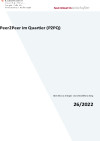
Das Projekt Peer2Peer im Quartier befasst sich mit der konkreten Umsetzung von Anwendungen zu Photovoltaik-Eigenverbrauchsoptimierung sowie Peer-to-Peer-Beziehungen auf Basis der Blockchain-Technologie in Quartieren und deren Validierung im Echtbetrieb.
Schriftenreihe
26/2022
Herausgeber: BMK
Deutsch, 43 Seiten
Downloads zur Publikation
LEIse-Wand: Innovative Fassaden für natürliche Raumlüftung und optimierten Schallschutz
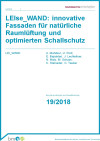
Natürliche Raumlüftung wird im Falle herkömmlicher Fassadenkonstruktionen im innerstädtischen Bereich sehr oft durch das lärmbelastete Umfeld verunmöglicht. Innovative Entwicklungen von Fassaden, die natürliche Lüftung und hinreichenden Lärmschutz kombinieren, können zu einer wesentlichen Steigerung der Energieeffizienz bei gleichzeitiger Gewährleistung der Nutzeranforderungen führen.
Schriftenreihe
19/2018
A. Mahdavi (Projektleitung), U. Pont (Endredaktion), sowie E. Bajraktari, J. Lechleitner, N. Maly, M. Schuss, C. Steineder, C. Tauber
Herausgeber: BMVIT
Deutsch, 66 Seiten
Downloads zur Publikation
CO2 neutrale Stadtteilentwicklung Itzling
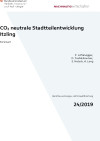
Ziel des Projekts „Itz Smart“ ist die Anknüpfung an bestehende Aktivitäten und die konsequente Weiterentwicklung des Wohnstandorts Itzling. Im Test- und Demonstrationsgebiet werden im Bereich der Verkehrsachse (Bahn und Schillerstraße) bzw. angrenzend an die Nahversorgungsachse (Itzlinger-Hauptstraße) nachhaltige Wohnquartiere mit zukunftsweisenden Mobilitätslösungen entwickelt. Die Betrachtung von „Wohnen und Mobilität“ zieht unter dem Aspekt „Stadt der kurzen Wege“ auch die Auseinandersetzung mit gezielter Mischnutzung und der Entwicklung solcher Quartiere nach sich.
Schriftenreihe
24/2019
P. Lüftenegger, D. Teufelsbrucker, S. Netsch, A. Lang
Herausgeber: BMVIT
Deutsch, 108 Seiten
Downloads zur Publikation
Fassadenintegrierte modulare Split-Wärmepumpe für Neubau und Sanierung (FiTNeS)
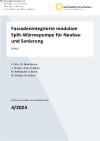
Das Ziel von FitNeS war die Entwicklung von modularen Split-Wärmepumpen mit sehr kompakten fassadenintegrierten Außeneinheiten für die Verwendung zur wohnungsweisen Heizung und Trinkwarmwasserversorgung. Einerseits soll eine modulare Bauweise mit einem hohen Grad an Vorfertigung ermöglicht werden und andererseits soll die architektonische Gestaltung und ein ansprechendes Design besondere Berücksichtigung finden. Eines der wesentlichen Entwicklungsziele ist die Minimierung der Schallemissionen durch eine optimierte Strömungsführung.
Schriftenreihe
4/2024
F. Ochs, W. Monteleone, C. Drexel, J. Fink, G. Bilgeri, M. Rothbacher, S. Breier, M. Elender, W. Winter
Herausgeber: BMK
Deutsch, 67 Seiten
Downloads zur Publikation
Effiziente, kostengünstige und wartungsfreundliche zentrale Mehrfamilienhaus-Lüftungsanlagen – Planung, Betrieb und Brandschutz (E.Vent)
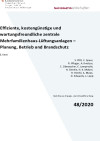
Ziel des Projekts war es, innovative technische Lösungen und Planungshilfen für eine kostengünstige Umsetzung und einen energieeffizienten und wartungsarmen Betrieb von zentralen Wohnraumlüftungssystemen zu erarbeiten. Dabei wurde ein starker Fokus auf das Thema Brandschutz und Balanceabgleich gelegt.
Schriftenreihe
48/2020
S. Öttl, C. Speer, R. Pfluger, A. Knotzer, C. Obmascher, E. Lamprecht, H. Gstrein, H. K. Malzer, H. Reichl, A. Music, D. Edwards, L. Lepp
Herausgeber: BMK
Deutsch, 122 Seiten
Downloads zur Publikation
Vakuumglas-Kastenfenster: Performance-Monitoring in Sanierungsprojekten (VAMOS)
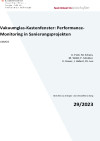
Fortsetzung und Vertiefung der Sondierung VIG_SYS_RENO zum Einsatz von Vakuumglas in Kastenfenstern für Zwecke der energetischen Optimierung von solchen Konstruktionen für Sanierungszwecke / Bestandsertüchtigung; Als Ergebnis werden vertiefte Kenntnisse über den Einsatz von hochwärmedämmenden Vakuumgläsern via Simulation und Einbau/Monitoring in Realsituation erarbeitet.
Schriftenreihe
29/2023
U. Pont, M. Schuss, M. Wölzl, P. Schober, K. Hauer, J. Haberl, Ch. Lux
Herausgeber: BMK
Deutsch, 147 Seiten
Downloads zur Publikation
DW² - Entwicklung einer thermisch verbesserten Schlitzwandkonstruktion
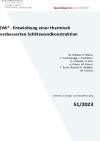
Die thermischen Eigenschaften von Schlitzwandkonstruktionen werden durch die Anwendung neuer Materialien und Herstellungsmethoden verbessert und durch Labor- und Feldversuche validiert sowie durch numerische und ökologische Betrachtungen ergänzt. Das Ergebnis kann bei der Errichtung von energetisch verbesserten unterirdischen Bauwerken wie beispielsweise Tiefgaragen oder zur Herstellung von Erdwärmespeichern verwendet werden.
Schriftenreihe
51/2023
M. Rebhan, R. Marte, F. Tschuchnigg, J. Schleicher, G. Vojvodic, H. Kim, A. Passer, M. Scherz, T. Potrc Obrecht, G. Winkler, M. Vremec
Herausgeber: BMK
Deutsch, 55 Seiten
Downloads zur Publikation
MOTIVE - Modellierung, Optimierung, und technische Integration von Vakuumglas-Elementen
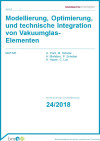
Im Rahmen dieses Projekt fand eine Auseinandersetzung mit der Entwicklung von Anschlussdetails für die Implementierung von Vakuumglas in völlig neuartigen Fenstersystemen statt. Zu den Ergebnissen dieser Sondierung enstand ein europaweit erster Realisierungsversuch in Form eines Mock-Ups, und es wurden umfassende Kenntnis und Erfahrung in der Gestaltung von Baudetails von solchen innovativen Produkten gewonnen.
Schriftenreihe
24/2018
Dipl.Ing. Dr.techn. U. Pont Ass.Prof. DDI. Dr.techn. M. Schuss Univ. Prof. DI Dr. A. Mahdavi
Herausgeber: BMVIT
Deutsch, 103 Seiten
Downloads zur Publikation
Potenzial der ökologischen Optimierung technischer Gebäudeausrüstung durch den Einsatz biogener Materialien (BiBi-TGA)
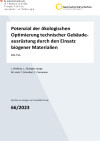
Erhebung des Substitutionspotenzials herkömmlicher Komponenten der technischen Gebäudeausrüstung durch biogene Materialien. Ziel war die Generierung neuer Daten zum ökologischen Verbesserungspotenzial des Einsatzes biogener Ressourcen in der technischen Gebäudeausrüstung in Bürogebäuden. Anhand von LCA-Screenings und Untersuchungen der technischen Umsetzbarkeit wurden die Potenziale analysiert.
Schriftenreihe
66/2023
J. Weithas, L. Eitzinger-Lange, M. Leeb, T.Schnabel, F. Coosmann
Herausgeber: BMK
Deutsch, 60 Seiten
Downloads zur Publikation
Einsatz von Augmented Reality zur Abnahme und Qualitätssicherung auf Baustellen (AR-AQ-Bau)
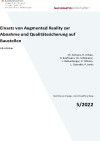
Ziel dieses Forschungsprojektes ist die Entwicklung eines baustellentauglichen Augmented-Reality-(AR)-Systems inklusive eines Remote-Expert-System und eines BIM-Closed-Loop Datenübertragungssystem zur Verbesserung der Bauqualität, Gebäudesicherheit und Energieeffizienz sowie zur Effizienzsteigerung im Baucontrolling.
Schriftenreihe
5/2022
Ch. Schranz, H. Urban, H. Kaufmann, Ch. Schönauer, J. Rattenberger, P. O’Brien, L. Ozeraitis, P. Jaritz
Deutsch, 62 Seiten
Downloads zur Publikation
Gamification als Möglichkeit für die Generierung von Daten zur energieorientierten Quartiersplanung (HotCity)
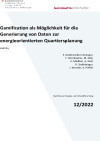
Ziel des Projekts war ein Funktionstest, ob durch Gamification kosteneffizient, rasch und zuverlässig ein aktueller Datensatz von energierelevanten Daten zur Quartiersplanung erhoben werden kann. Dies wurde am Beispiel der Potenzialermittlung von industriellen und gewerblichen Abwärmequellen in Wien und Graz ermittelt.
Schriftenreihe
12/2022
E. Gebetsroither-Geringer, T. Wernbacher, M. Göls, E. Meißner, A. Graf, R. Stollnberger, J. Worster, A. Peiffer
Herausgeber: BMK
Deutsch, 157 Seiten
Downloads zur Publikation
FEELings - User Feedback for Energy Efficiency in Buildings

Der Energieverbrauch von Gebäuden wird maßgeblich durch das Verhalten von NutzerInnen beeinflusst. In diesem Forschungsprojekt wird ein neuartiges User-Feedbacksystem untersucht. NutzerInnen geben Feedback zur empfundenen Raumqualität. Auf Basis des Feedbacks werden Einstellungen an der Gebäudetechnik zur Energieeffizienz- und Komfortsteigerung optimiert. Der Proof-of-Concept für dieses neuartige System wird anhand von zwei Use-Cases erbracht.
Schriftenreihe
39/2020
M. Monsberger, D. Koppelhuber, S. Pabst, V. Sabol, H. Gursch, E. Schlager, O. Prentner, S. Singh, M. Herzlieb, M. Wedam
Herausgeber: BMK
Deutsch, 80 Seiten
Downloads zur Publikation
LINE-FEED: Plug-in Photovoltaik-Speicher für die Steckdose
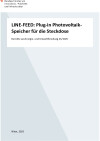
Im Projekt LINE-FEED wurden Technologien entwickelt, die für einen Photovoltaik-Speicher benötigt werden, der von jedem Laien an einer gewöhnlichen Steckdose angeschlossen werden kann. Ziel war die Entwicklung eines Speichersystems für Haushalte in urbanen Räumen, welche selbst keine Möglichkeit der Installation einer Photovoltaikanlage haben.
Schriftenreihe
45/2025
Christoph Grimmer, Patrick Salcher, Stephan Weinberger, Zlatko Bonjic, Klaus Krischan
Herausgeber: BMIMI
Deutsch, 32 Seiten
Downloads zur Publikation
Entwicklung von Beurteilungsmethoden für den Einsatz von Kleinwindenergieanlagen in urbaner Umgebung (Urbane Windenergie)
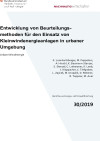
Im Projekt "Urbane Windenergie" wurden die Grundlagen für die technische Beurteilung des Einsatzes von Kleinwindenergieanlagen (KWEA) im urbanen Raum geschaffen. Dazu wurden einerseits Methoden zur Charakterisierung von turbulenten Strömungsfeldern entwickelt und andererseits die Auswirkungen von turbulenten Strömungsbedingungen anhand ausgewählter Turbulenzeigenschaften auf die Performance von KWEA analysiert. Auf Basis der Ergebnisse wurde ein Standort-Bewertungsschema für die Errichtung von KWEA im urbanen Raum entwickelt.
Schriftenreihe
30/2019
K. Leonhartsberger, M. Peppoloni, A. Hirschl, K. Baumann-Stanzer, S. Stenzel, C. Lotteraner, K. Leeb, J. Klappacher, C. Tiefgraber, L. Zajicek, M. Drapalik, D. Reiterer, R. Teppner, M. Auer
Herausgeber: BMVIT
Deutsch, 149 Seiten
Downloads zur Publikation
Forschungsinitiative „Zukunftssicheres Bauen“ – Phase 2 (2015–2018)
Ziel der Forschungsinitiative „Zukunftssicheres Bauen“ ist die Untersuchung ganzheitlicher Aspekte nachhaltigen Bauens als Beitrag zur zukunftsfähigen Weiterentwicklungen von Produkten und Dienstleistungen der Unternehmen der Stein- und keramischen Industrie. Die ÖGUT begleitet die Forschungsinitiative des Fachverbands der Stein- und keramischen Industrie und stellt den Ergebnistransfer zum Forschungsprogramm "Stadt der Zukunft" sicher.
Coole Fenster - Fenster mit Beschattung im Spannungsfeld sommerliche Überwärmung, Tageslicht und winterlicher Wärmeschutz in der Klimakrise
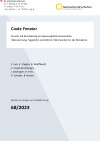
Das Fenster und dazugehörige Komponenten wie Sonnen- oder Blendschutz werden als einheitliches Haustechnikelement hinsichtlich unterschiedlicher jahreszeitlicher Erfordernisse bzw. im Hinblick auf die Klimakrise optimiert. Die Ergebnisse dienen als Grundlage für Neuentwicklungen in der Fenster- und Verschattungstechnik, um sommerlichen wie winterlichen Wärmeschutz bei gleichzeitiger Gewährleistung einer ganzjährigen ausreichenden natürlichen Belichtung sicherzustellen.
Schriftenreihe
68/2023
C. Leh, V. Stiegler, R. Wolffhardt, S. Vavrik-Kirchsteiger, J. Bachinger, H. Ferk, P. Schober, B. Nusser
Herausgeber: BMK
Deutsch, 182 Seiten
Downloads zur Publikation
PVOPTI-Ray: Optimierung reflektierender Materialien und Photovoltaik im Stadtraum bezüglich Strahlungsbilanz und Bioklimatik
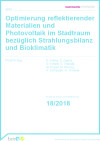
Im Rahmen des Projektes PVOPTI-Ray wurde der Einfluss der Reflexion und der Strahlungsbilanz in städtischem komplexem Gelände auf die Performance von fassadenintegrierter Photovoltaik (PV) untersucht. Ebenso wurde der Einfluss der Solarmodule und der Strahlungswandlung an Solarmodulen auf das Stadtklima analysiert.
Schriftenreihe
18/2018
P. Weihs, S. Zamini, S. Krispel, S. Oswald, M. Peyerl, M. Revesz, A. Schneider, H. Trimmel
Herausgeber: BMVIT
Deutsch, 98 Seiten
Downloads zur Publikation
Entwicklung von Klett-Befestigungssystemen für die Technische Gebäudeausrüstung (Klett-TGA)
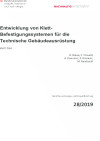
Ziel dieser Sondierung ist eine Systemveränderung bei der Montage der TGA, welche zukünftig einen universelleren Einsatz von Klett ermöglicht.
Schriftenreihe
28/2019
R. Riewe, F. Oswald, A. Pavicevic, Z. Kresevic, M. Raudaschl
Herausgeber: BMVIT
Deutsch, 78 Seiten
Downloads zur Publikation
Sanierung von Gründerzeitkellern zu Wohnungen mit hoher Lebensqualität und minimalem Energieverbrauch (SPACE4free)
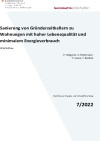
Planung von dauerhaften und schadensfreien Wohnungen mit hoher Lebensqualität und minimalem Energieverbrauch in Souterrainbereichen feuchtebelasteter Keller von Gründerzeithäusern. Durch den Einsatz von innovativen Lüftungssteuerungen wird ein behagliches Raumklima erzeugt. Gleichzeitig wird die Toleranz gegenüber unterschiedlichen Nutzungsarten gewährleistet. Ein Planungstool ermöglicht die Skalierung der Erkenntnisse und somit die Anwendbarkeit auf verschiedenste Planungssituationen.
Schriftenreihe
7/2022
P. Wegerer, S. Hinterseer, T. Lewis, T. Bednar
Herausgeber: BMK
Deutsch, 163 Seiten
Downloads zur Publikation
URBAN STRAW - Brandschutztechnische Konditionierung von Einblas-Stroh zur Gebäudedämmung der urbanen Gebäudeklassen 4 und 5
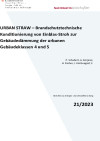
Entwicklung einer Brandschutzausrüstung von Strohhäcksel-Einblasdämmung zur Erzielung der Schwerentflammbarkeit anhand biogener Flammschutzmittel materialverwandter Stoffe und deren Applikationsverfahren. Anwendung des Materials als thermische Gebäudedämmung bei der Vorfertigung materialreduzierter Holzbauelemente für die urbanen Gebäudeklassen 4 und 5 mit bis zu 6 Geschossen.
Schriftenreihe
21/2023
P. Schubert, A. Korjenic, H. Fischer, I. Kirchengast, F. Hahn
Herausgeber: BMK
Deutsch, 76 Seiten
